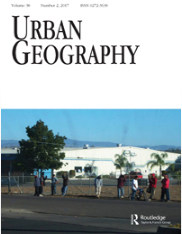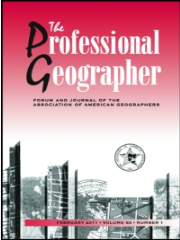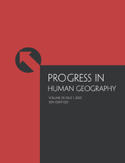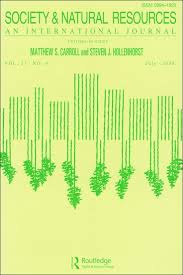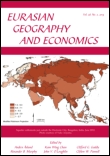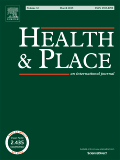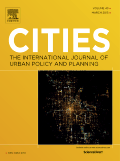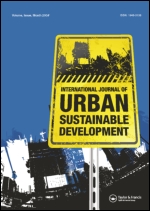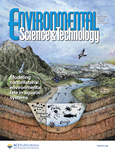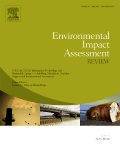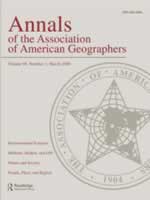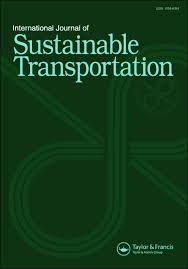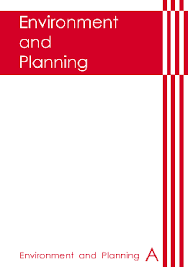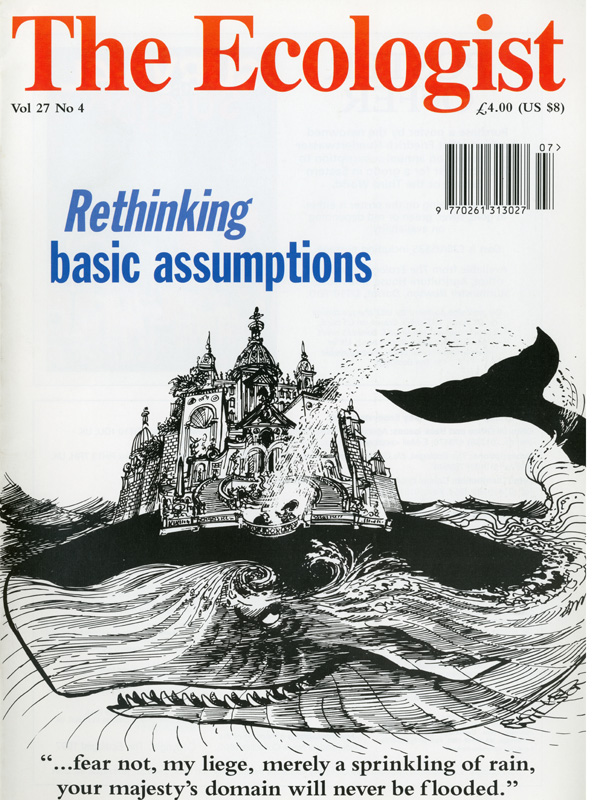
Dimitrios Gounaridis, Joshua P Newell, 2024.
Scientific Reports
Abstract:
Using data from Twitter (now X), this study deploys artificial intelligence (AI) and network analysis to map and profile climate change denialism across the United States. We estimate that 14.8% of Americans do not believe in climate change. This denialism is highest in the central and southern U.S. However, it also persists in clusters within states (e.g., California) where belief in climate change is high. Political affiliation has the strongest correlation, followed by level of education, COVID-19 vaccination rates, carbon intensity of the regional economy, and income. The analysis reveals how a coordinated social media network uses periodic events, such as cold weather and climate conferences, to sow disbelief about climate change and science, in general. Donald Trump was the strongest influencer in this network, followed by conservative media outlets and right-wing activists. As a form of knowledge vulnerability, climate denialism renders communities unprepared to take steps to increase resilience. As with other forms of misinformation, social media companies (e.g., X, Facebook, YouTube, TikTok) should flag accounts that spread falsehoods about climate change and collaborate on targeted educational campaigns.
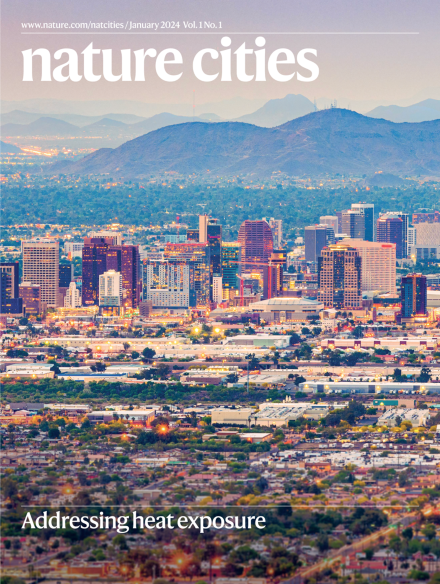
Jason K Hawes, Benjamin P Goldstein, Joshua P Newell, Erica Dorr, Silvio Caputo, Runrid Fox-Kämper, Baptiste Grard, Rositsa T Ilieva, Agnès Fargue-Lelièvre, Lidia Poniży, Victoria Schoen, Kathrin Specht, Nevin Cohen, 2024.
nature cities
Abstract:
Urban agriculture (UA) is a widely proposed strategy to make cities
and urban food systems more sustainable. Until now, we have lacked a
comprehensive assessment of the environmental performance of UA
relative to conventional agriculture, and results from earlier studies have
been mixed. This is the frst large-scale study to resolve this uncertainty
across cities and types of UA, employing citizen science at 73 UA sites
in Europe and the United States to compare UA products to food from
conventional farms. Results reveal that the carbon footprint of food from
UA is six times greater than conventional agriculture (420 gCO2e versus
70 gCO2e per serving). However, some UA crops (for example, tomatoes)
and sites (for example, 25% of individually managed gardens) outperform
conventional agriculture. These exceptions suggest that UA practitioners
can reduce their climate impacts by cultivating crops that are typically
greenhouse-grown or air-freighted, maintaining UA sites for many years,
and leveraging circularity (waste as inputs).
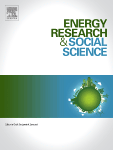
Benjamin Leffel, Thomas P Lyon, Joshua P Newell, 2024.
Energy Research & Social Science
Abstract:
Companies and subnational governments are actively attempting to fill the greenhouse gas (GHG) mitigation gap left by weak national policy, but how effective are their efforts in reducing GHG emissions? This is the first study to disaggregate corporate GHG reporting from CDP (formerly Carbon Disclosure Project), down to the facility level to analyze the respective roles of corporate initiatives and subnational public policies in driving corporate decarbonization in the United States from 2010 to 2019. We find that although corporate decarbonization initiatives are associated with GHG reductions, the primary drivers of corporate facility decarbonization are state-level climate policies, in particular financial incentives for energy efficiency. Given that the same types of incentives are significantly expanded under the 2022 Inflation Reduction Act (IRA), our finding suggests that state and local government mobilization of new incentives will play a crucial role in achieving private sector decarbonization goals. Last, total emissions by CDP-disclosing corporations increased substantially over our sample period, meaning that expansion of subnational climate action and corporate initiatives may be vital to reduce overall U.S. corporate emissions.
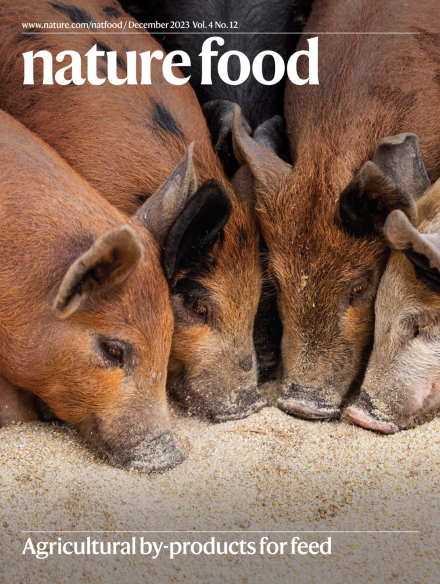
Jiangxiao Qiu, Hui Zhao, Ni-Bin Chang, Chloe B Wardropper, Catherine Campbell, Jacopo A Baggio, Zhengfei Guan, Patrice Kohl, Joshua Newell, Jianguo Wu, 2024.
Nature Food
Abstract:
Scaling up urban agriculture could leverage transformative change, to build and maintain resilient and sustainable urban systems. Current understanding of drivers, processes and pathways for scaling up urban agriculture, however, remains fragmentary and largely siloed in disparate disciplines and sectors. Here we draw on multiple disciplinary domains to present an integrated conceptual framework of urban agriculture and synthesize literature to reveal its social–ecological effects across scales. We demonstrate plausible multi-phase developmental pathways, including dynamics, accelerators and feedback associated with scaling up urban agriculture. Finally, we discuss key considerations for scaling up urban agriculture, including diversity, heterogeneity, connectivity, spatial synergies and trade-offs, nonlinearity, scale and polycentricity. Our framework provides a transdisciplinary roadmap for policy, planning and collaborative engagement to scale up urban agriculture and catalyse transformative change towards more robust urban resilience and sustainability.
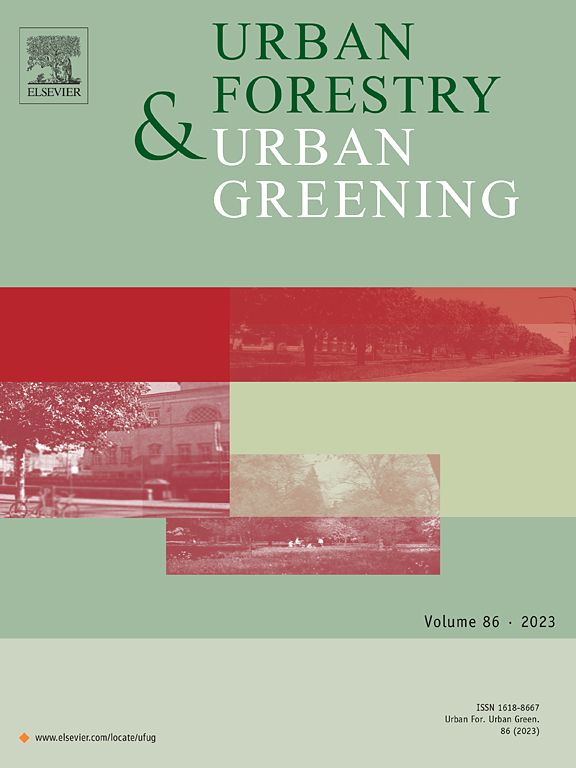
Samuel Limerick, Jason K Hawes, Dimitrios Gounaridis, Nevin Cohen, Joshua P. Newell, 2023.
Urban Forestry & Urban Greening
Abstract:
Community gardens are a form of green infrastructure that provides social and environmental benefits for garden users and the surrounding area. However, little is known about who has walking access to community gardens in most cities today and how this may change in the future. To address this gap, we examine 15-minute walking access to community gardens in New York City (NYC), and how land-use and investment decisions will impact the future of NYC as a 15-minute garden city. Our results indicate that more than half of the city’s residents have this access to a community garden, and that neighborhoods with lower income, lower proportions of white residents and homeowners, and higher rates of educational attainment have better access. Optimization modeling indicates that universal 15-minute access is unlikely, though more than 70% of NYC residents could have walking access with as few as 50 additional community gardens. Supporting new community gardens on vacant land and parking lots is the most efficient way to expand access, though siting community gardens on a range of land use types is required to maximize access. By mapping community gardens, analyzing their distribution, and modeling how to scale-up urban agriculture, this paper presents a scenario-based process for exploring how and where to expand urban amenities.
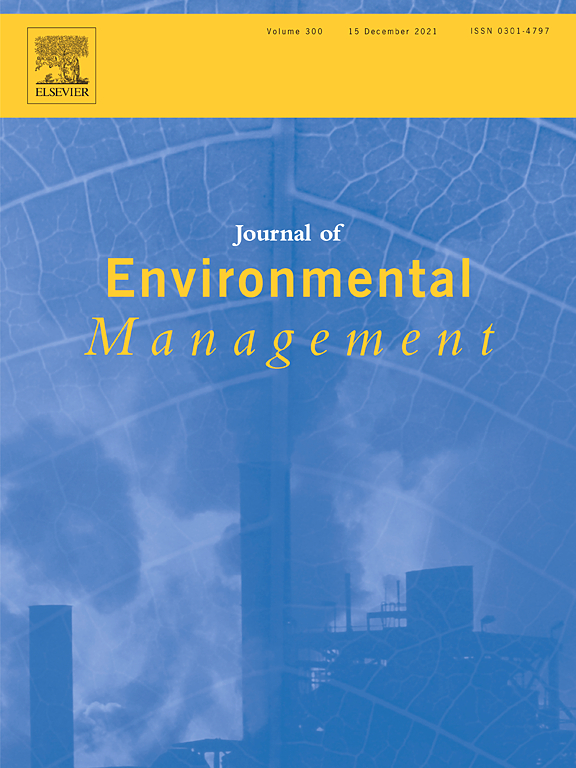
Calli P. VanderWilde, Joshua P. Newell, Dimitrios Gounaridis, Benjamin P. Goldstein 2023.
Supply Chain Management
Abstract:
Although causal links between tropical deforestation and palm oil are well established, linking this land use change to where the palm oil is actually consumed remains a distinct challenge and research gap. Supply chains are notoriously difficult to track back to their origin (i.e., the ‘first-mile’). This poses a conundrum for corporations and governments alike as they commit to deforestation-free sourcing and turn to instruments like certification to increase supply chain transparency and sustainability. The Roundtable on Sustainable Palm Oil (RSPO) offers the most influential certification system in the sector, but whether it actually reduces deforestation is still unclear. This study used remote sensing and spatial analysis to assess the deforestation (2009–2019) caused by oil palm plantation expansion in Guatemala, a major palm oil source for international consumer markets. Our results reveal that plantations are responsible for 28% of deforestation in the region and that more than 60% of these plantations encroach on Key Biodiversity Areas. RSPO-certified plantations, comprising 63% of the total cultivated area assessed, did not produce a statistically significant reduction in deforestation. Using trade statistics, the study linked this deforestation to the palm oil supply chains of three transnational conglomerates – Pepsico, Mondelēz International, and Grupo Bimbo – all of whom rely on RSPO-certified supplies. Addressing this deforestation and supply chain sustainability challenge hinges on three measures: 1) reform of RSPO policies and practices; 2) robust corporate tracking of supply chains; and 3) strengthening forest governance in Guatemala. This study offers a replicable methodology for a wide-range of investigations that seek to understand the transnational linkages between environmental change (e.g. deforestation) and consumption.
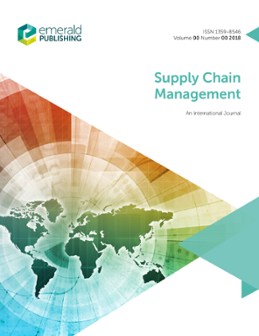
Sanaz Chamanara, Benjamin P. Goldstein, Joshua P. Newell 2023.
Supply Chain Management
Abstract:
Purpose: Supply chain governance constitutes the rules, structures and institutions that guide supply chains toward various objectives, including environmental sustainability. Previous studies have provided insight into the relationship between governance and sustainability but have overlooked two crucial dimensions: power dynamics and the influence of outside actors. This paper aims to address these two gaps by measuring differential power (i.e. power asymmetries) among actors across the supply chain, including external actors.
Design/methodology/approach: This paper quantifies power dynamics across the entire chain through a structured survey in which supply chain participants rank their peer’s ability to affect environmental and social outcomes. This paper tests this approach by surveying 200 industry professionals (e.g. feedlot owners, retailers) and external actors (e.g. NGOs) in the US beef sector. Findings: Respondents ranked the most powerful actors as follows: feedlot owners; processing plant owners; and regulatory agencies. Results also revealed that trade associations, retailers and cow–calf producers and ranchers perceive a sense of powerlessness. This study reveals multiple power nodes and confirms a shift in the power structure depending on which indicator respondents considered (e.g. environmental impacts vs employee safety). This study concludes that the buyer–producer dichotomy often used to assess supply chain governance fails to capture the complex dynamics among actors within supply chains. Originality/value: This study demonstrates a novel approach to measure perceptions of power in supply chains. This method enables researchers to map networks of power across entire supply chains, including internal and external actors, to advance understanding of supply chain governance dynamics. Previous studies have misidentified who governs environmental outcomes in supply chains, and NGOs have overestimated the power of consumers and retailers to influence producers.
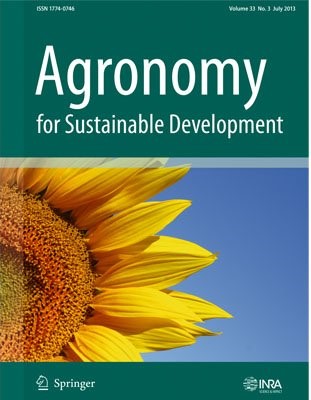
Erica Dorr, Jason K. Hawes, Benjamin Goldstein, Agnès Fargue-Lelièvre, Runrid Fox-Kämper, Kathrin Specht, Konstancja Fedeńczak, Silvio Caputo, Nevin Cohen, Lidia Poniży, Victoria Schoen, Tomasz Górecki, Joshua P. Newell, Liliane Jean-Soro & Baptiste Grard 2023.
Agronomy for Sustainable Development, DOI 10.1007/s13593-022-00859-4
Abstract:There is a lack of data on resources used and food produced at urban farms. This hampers attempts to quantify the environmental impacts of urban agriculture or craft policies for sustainable food production in cities. To address this gap, we used a citizen science approach to collect data from 72 urban agriculture sites, representing three types of spaces (urban farms, collective gardens, individual gardens), in five countries (France, Germany, Poland, United Kingdom, and United States). We answered three key questions about urban agriculture with this unprecedented dataset: (1) What are its land, water, nutrient, and energy demands? (2) How productive is it relative to conventional agriculture and across types of farms? and (3) What are its contributions to local biodiversity? We found that participant farms used dozens of inputs, most of which were organic (e.g., manure for fertilizers). Farms required on average 71.6 L of irrigation water, 5.5 L of compost, and 0.53 m2 of land per kilogram of harvested food. Irrigation was lower in individual gardens and higher in sites using drip irrigation. While extremely variable, yields at well-managed urban farms can exceed those of conventional counterparts. Although farm type did not predict yield, our cluster analysis demonstrated that individually managed leisure gardens had lower yields than other farms and gardens. Farms in our sample contributed significantly to local biodiversity, with an average of 20 different crops per farm not including ornamental plants. Aside from clarifying important trends in resource use at urban farms using a robust and open dataset, this study also raises numerous questions about how crop selection and growing practices influence the environmental impacts of growing food in cities. We conclude with a research agenda to tackle these and other pressing questions on resource use at urban farms.

Jesse Vega-Perkins, Joshua P Newell and Gregory Keoleian 2023.
Environmental Research Letters, DOI 10.1088/1748-9326/aca4e6
Abstract:The transition to electric vehicles (EVs) will impact the climate, the environment, and society in highly significant ways. This study compares EVs to vehicles with internal combustion engines for three major areas: greenhouse gas emissions (GHGs), fuel costs, and transportation energy burden (i.e. percentage of income spent on vehicle fuels). Excluded in the analysis is the purchase cost of the vehicles themselves. The results reveal that over 90% of vehicle-owning U.S. households would see reductions in both GHGs and transportation energy burden by adopting an EV. For 60% of households these savings would be moderate to high (i.e. >2.3 metric tons of CO2e reduction per household annually and >0.6% of energy burden reduction). These reductions are especially pronounced in the American West (e.g. California, Washington) and parts of the Northeast (e.g. New York) primarily due to a varying combination of cleaner electricity grids, lower electricity prices (relative to gas prices), and smaller drive-cycle and temperature-related impacts on fuel efficiency. Moreover, adopting an EV would more than double the percentage of households that enjoy a low transportation energy burden (<2% of income spent on fuel annually). This equates to 80% of all vehicle-owning U.S. households. Nevertheless, over half of the lowest income households would still have a high EV energy burden (>4% income spent on fuel annually), and if at-home charging is unavailable, this rises to over 75 percent. Addressing this inequity hinges on three major interventions: 1) targeted policies to promote energy justice in lower-income communities, including subsidizing charging infrastructure; 2) strategies to reduce electricity costs; and 3) expanding access to low-carbon transport infrastructure (e.g. public transit, biking, and car sharing).
Keywords: electric vehiclesgreenhouse gas emissionsenergy justicefuel costs
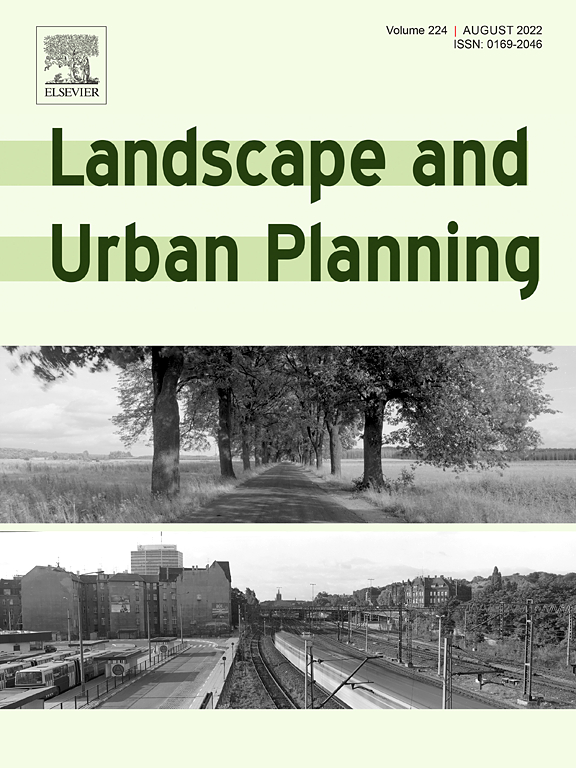
Jason K. Hawes, Dimitrios Gounaridis, Joshua P. Newell. 2022.
Landscape and Urban Planning, DOI:10.1016/j.landurbplan.2022.104447
Abstract:Urban agriculture, experiencing a resurgence across the Global North, features prominently in food system sustainability and urban resilience discourse, planning, and policy. Research, however, indicates that racialized gentrification tends to accompany urban agriculture, similar to a phenomenon documented with other green space. This study used remote sensing to map home (N = 478) and community (N = 130) gardens across Detroit, an emblematic legacy city undergoing significant redevelopment. Despite being a city in which seventy-eight percent of the residents are Black, spatial regression revealed that gardens in Detroit are actually more prevalent in non-Black-neighborhoods. Community gardens predominate in neighborhoods where residents are younger, wealthier, and college-educated, while home gardens are more numerous in areas with high rates of home ownership. Modeling also indicated that gardens are in areas with limited access to fresh produce. Contrary to the literature, we did not find a correlation between the presence of gardens and potential gentrification. Gardens, however, are consistently more prevalent in neighborhoods that have stabilized after experiencing high rates of vacancy, foreclosure, and housing demolition. These results have three important implications. First, redevelopment processes in legacy cities such as Detroit, through urban agriculture and other green infrastructure, are likely to lead to garden distributions different than those found in cities with more typical development trajectories. Second, the research calls into question generalized assumptions that expanding green space inevitably leads to gentrification, necessitating deeper investigation of these dynamics in diverse urban settings. And finally, racialized narratives around gardens and redevelopment risk undermining long-standing connections between Detroit’s gardens and environmental justice.
Keywords: Urban agricultureDetroitRaceIncomeGentrificationEnvironmental justice

Jiayu Wu, Zike Xu, Yunhan Jin, Yanwei Chai, Joshua Newell, Na Ta. 2022.
Landscape and Urban Planning, DOI:10.1016/j.landurbplan.2022.104381
Abstract: Urban green space is conducive to the physical and mental health of residents. However, exposure to green space is often highly unequal. This research addresses a major gap in the green space literature: how daily mobility patterns lead to differential exposure to green space among residents and how this varies by gender. The study uses travel data (7,800 trips) from 662 residents in Beijing (Haidan District), in combination with high-resolution street-view data and machine learning, to measure exposure to green space. The results show that there are significant disparities with respect to exposure to green space during daily travel, with men having advantages in terms of this exposure. This is, in part, due to the fact that their travel patterns varied more widely. Women had more exposure to green space, in terms of overall travel time, but it was more constrained to selected routes. Reasons for these disparities are complex, with age, occupation, household type and travel mode (e.g., car, bus, by foot) all important factors that intertwine with gender. In addition to revealing gender disparities associated with exposure to green space, this study provides a novel mixed method to capture daily travel patterns that can be used for a broad array of inquiries related to mobility in the built environment.
Keywords: Green space exposureDaily mobility patternsDisparitiesGenderUrban planning
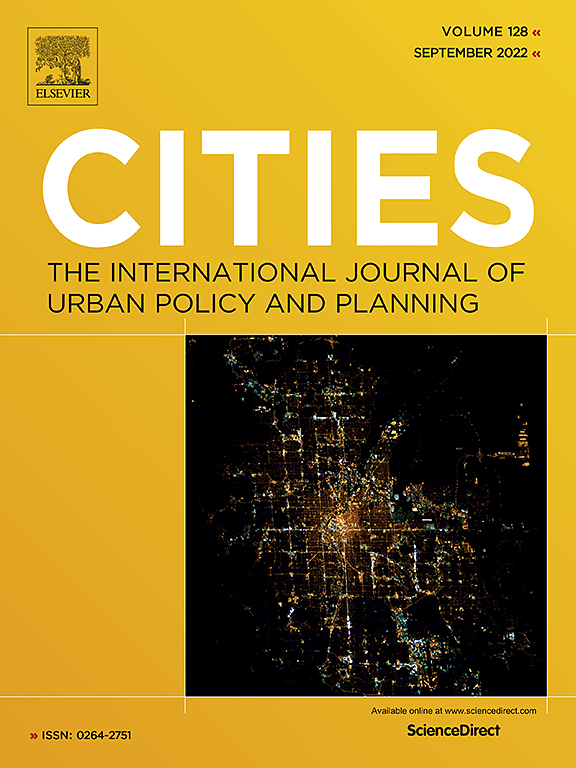
Joshua P. Newell, Alec Foster, Mariel Borgman, Sara Meerow. 2022.
Cities, DOI: 10.1016/j.cities.2022.103664
Abstract: Urban agriculture provides a range of ecosystem services (as well as potential disservices). This study examines the spatial extent, physical characteristics, and residents’ perceptions of community and private gardens in Detroit, a city that has high potential for agricultural development given its abundant vacant and abandoned land. Despite popular narratives of Detroit as a mecca for urban agriculture, spatial analysis of the city’s Lower Eastside (~15 sq. miles) reveals that gardens cover less than 1% of the vacant land and are often an ephemeral form of land use. Interviews indicate that residents plant gardens primarily for the cultural ecosystem services (e.g. social cohesion, community building) they provide and secondarily for provisioning services (i.e. food production). Uncertainty over land tenure, legacy environmental pollutants, unknowns regarding potential ecosystem disservices, and lack of government support and capital investment are the primary obstacles to scaling up urban agriculture in Detroit and other cities and will need to be addressed. To facilitate its expansion, we propose that urban agriculture be framed as a form of multifunctional green infrastructure. We conducted GIS-based analysis to identify suitable parcels for scaling up agriculture in the study area. To maximize the distribution of ecosystem service benefits, our modeling recommends dispersing rather than clustering gardens in the urban landscape. This strategy would provide more benefits to more people while countering the gentrification effects that may occur when cities expand green space.
Keywords: DetroitUrban agricultureEquityEnvironmental justiceGreen infrastructure
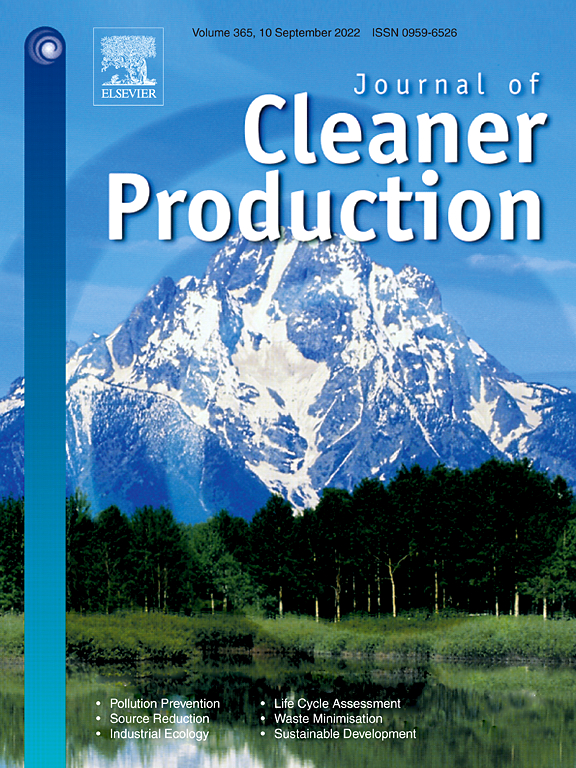
Kimin Cho, Benjamin Goldstein, Dimitrios Gounaridis, Joshua P. Newell. 2022.
Journal of Cleaner Production, DOI: 10.1016/j.jclepro.2022.131275
Abstract:Growing global demand for natural rubber is driving deforestation due to the expansion of rubber plantations, with consequences for biodiversity, carbon storage, and local communities. There has been little attention given to these issues in Sri Lanka, where rubber production is central to economic growth. Although private initiatives and government regulations aim to reduce deforestation associated with these plantations, it is unclear if these measures effectively protect forests or limit associated risks in the supply chains of companies purchasing Sri Lankan rubber. This paper uses the TRACAST methodological framework and remote sensing to track natural rubber supply chains from Sri Lanka to the U.S and to identify hidden deforestation risks resulting from this trade. We estimate 196 km2 of forest were converted into rubber plantations between 2006 and 2016, including protected forests located in an emerging rubber frontier in southeast Sri Lanka. Our analysis identifies rubber traders and multinational tire manufacturers as key actors that hinder the traceability of rubber back to the plantations. This opacity increases the potential for unsustainably produced rubber to enter global supply chains of transnational corporations such as Loadstar (Michelin) and Nike. Most of these corporations have sustainable procurement policies, but the effectiveness of these policies is compromised by the lack of supply chain transparency. Integrating public and private sector management through inclusive multi-stakeholder initiatives and multi-level land use governance can help overcome these hurdles, prevent future deforestation, and assist Sri Lanka in moving towards more sustainable rubber production.
Keywords: Rubber Supply chain sustainabilityDeforestationRemote sensingTraceability

Rositsa T. Ilieva, Nevin Cohen, Maggie Israel, Kathrin Specht, Runrid Fox-Kämper, Agnès Fargue-Lelièvre, Lidia Poniży, Victoria Schoen, Silvio Caputo, Caitlin K. Kirby, Benjamin Goldstein, Joshua P. Newell, Chris Blythe. 2022.
Land, DOI: 10.3390/land11050622
Abstract: Despite extensive literature on the socio-cultural services of urban open spaces, the role of food-producing spaces has not received sufficient attention. This hampers advocacy for preserving and growing urban agricultural activities, often dismissed on justifications that their contributions to overall food supply are negligible. To understand how the social benefits of urban agriculture have been measured, we conducted a systematic review of 272 peer-reviewed publications, which drew on insights from urban agriculture sites in 57 different countries. Through content analysis, we investigated socio-cultural benefits in four spheres: engaged and cohesive communities, health and well-being, economic opportunities, and education. The analysis revealed growth in research on the social impacts of gardens and farms, with most studies measuring the effects on community cohesion and engagement, followed by increased availability and consumption of fruits and vegetables associated with reduced food insecurity and better health. Fewer studies assessed the impact of urban farming on educational and economic outcomes. Quantifying the multiple ways in which urban agriculture provides benefits to people will empower planners and the private sector to justify future investments. These findings are also informative for research theorizing cities as socio-ecological systems and broader efforts to measure the benefits of urban agriculture, in its many forms.
Keywords: urban agriculturemetricssocio-cultural benefitssocial servicesindicators
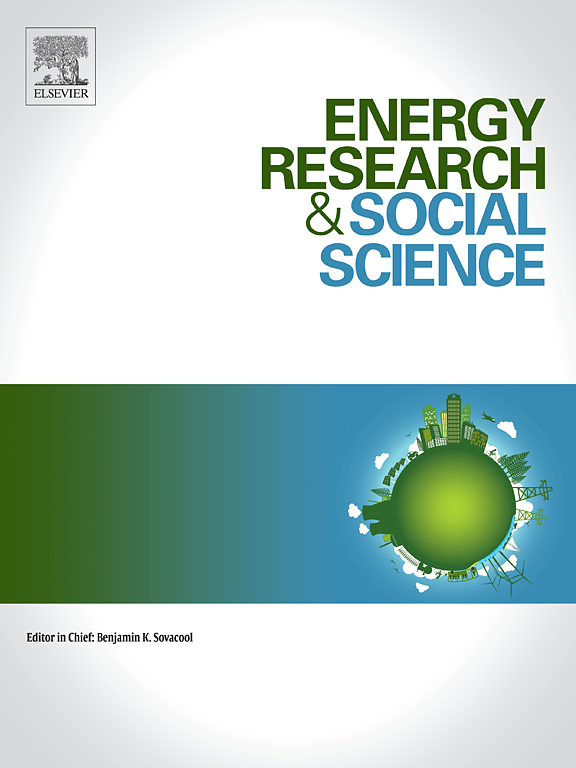
Benjamin Goldstein, Tony G.Reames, Joshua P.Newell. 2022.
Energy Research & Social Science, DOI: 10.1016/j.erss.2021.102365
Abstract: Residential energy use represents roughly 17% of annual greenhouse gas emissions in the United States (U.S.). Studies show that legacy housing policies and financial lending practices have negatively impacted housing quality and home ownership in non-Caucasian and immigrant communities. Both factors are key determinants of household energy use. But to date there has been no national scale analysis of how race and ethnicity affect household energy use and related carbon emissions. In this paper, we estimate energy use and emissions of 60 million household to clarify how energy efficiency and carbon emissions vary by race, ethnicity, and home ownership. We find that per capita emissions are higher in Caucasian neighborhoods than in African-American neighborhoods, even though the former live in more energy-efficient homes (low energy use intensity). This emissions paradox is explained by differences in building age, rates of home ownership, and floor area in these communities. In African-American neighborhoods, homes are older, home ownership is lower (reducing the likelihood of energy retrofits), and there is less floor area per person compared to Caucasian neighborhoods. Statistical models suggest that historical housing policies, particularly “redlining”, partially explain these differences. We suggest three policies to address this emissions paradox: Government financing of home retrofits, particularly in rental units; Increased access to photovoltaics in disadvantaged communities; and Disincentivizes for high energy consumption and emissions. Addressing this emissions paradox provides an opportunity for an equitable decarbonization of the U.S. housing sector.
Keywords: Energy justiceRaceClimate changeCarbon footprintHousehold energy use
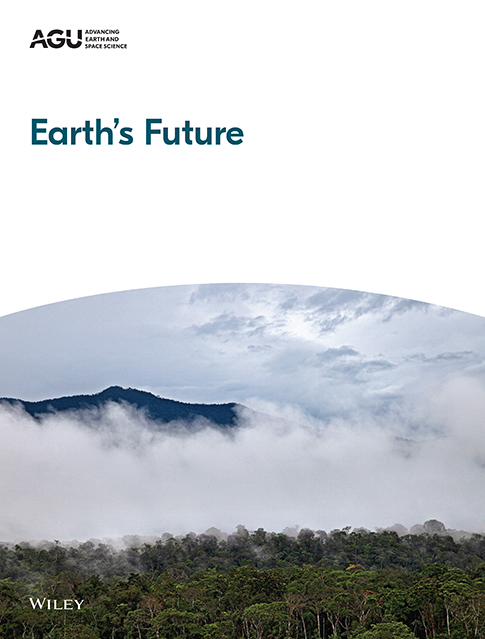
Jianxun Yang, Dimitrios Gounaridis, Miaomiao Liu, Jun Bi, Joshua P. Newell. 2021.
Earth’s Future, DOI: 10.1029/2021EF002144
Abstract: China has pledged to cap its carbon emission by 2030 and achieve carbon neutrality by 2060, making knowledge about how the Chinese general public understands climate change crucial and timely. This article reports findings from surveys of climate change perceptions in six Chinese cities (∼40 million people). We identify 10 distinct mental images and 37 subcategories that represent a wide spectrum of perceptions of climate change among the Chinese public. The results reveal that people tend to conflate climate change with air pollution and seasonal weather changes. Although skepticism is not prominent, voices for action are also limited. Furthermore, climate change perceptions are heterogenous across regions and demographic groups. Respondents from developed cities are less likely to conflate climate change with local weather. People living in polluted regions tend to equate climate change with air pollution. Well-educated, high-income, and young residents are more aware of the scientific dimensions of climate change and its consequences. Females and the elderly think more about health implications and how to adapt. Compared to Western countries, opinions about climate change in China are less polarized and controversial, probably due to different political realities and media framings. This study provides an updated picture of climate change perceptions among the Chinese general public and recommends targeted and multi-level communication strategies for policymakers.
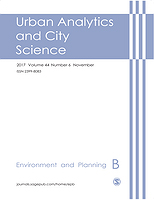
Robert Goodspeed, Ruoshui Liu, Dimitrios Gounaridis, Camilla Lizundia, Joshua Newell.2021.
Environment & Planning B, DOI:10.1177/23998083211033610
Abstract:There is a growing interest in planning for green infrastructure, as well as a growing recognition of the multifunctional nature of green infrastructure, since it provides many social and environmental benefits to cities and regions. However, there is a lack of appropriate methods for prioritizing the locations for green infrastructure interventions. In response, this article proposes a spatial multi-criteria analysis for green infrastructure. We demonstrate the method at the regional scale for Southeast Michigan, as well as through two embedded case studies within this region. We show how the method can be adapted for rural parks and conservation planning, as well as for urban green infrastructure planning within the City of Detroit. Although lacking the analytical structure needed for some planning questions, and limited by data and access to appropriate technical skills, we argue the spatial planning approach strikes an appropriate balance between technical rigor and transparency required for collaborative planning practice. The described GIS-based analysis technique can be used as part of a planning process to identify locations for green infrastructure expansion or improvement in a way that acknowledges and balances their social and environmental benefits.
Keywords: Green infrastructuremulti-criteria analysisregional planningurban greeningland conservation
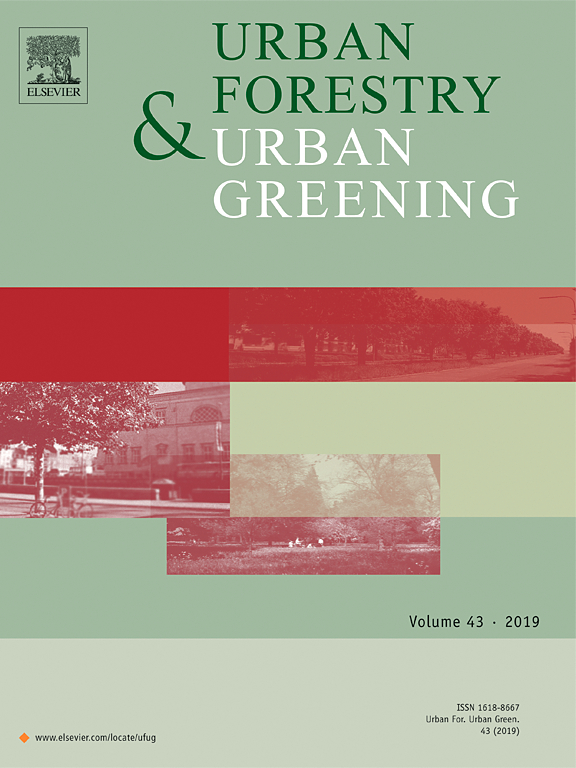
Silvio Caputo, Victoria Schoen, Kathrin Specht, Baptiste Grard, Chris Blythe, Nevin Cohen, Runrid Fox-Kamper, Jason Hawes, Joshua Newell, Lidia Ponizy.2021.
Urban Forestry & Urban Greening, DOI:10.1016/j.ufug.2020.126934
Abstract:Many studies examine the correlation between the use of resources such as water, energy and land, and the production of food. These nexus studies focus predominantly on large scale systems, often considering the social dimensions only in terms of access to resources and participation in the decision-making process, rather than individual attitudes and behaviours with respect to resource use. Such a concept of the nexus is relevant to urban agriculture (UA), but it requires customisation to the particular characteristics of growing food in cities, which is practiced mainly at a small scale and produces not only food but also considerable social, economic, and environmental co-benefits. To this end, this paper proposes a new conceptual basis for a UA Nexus, together with an assessment methodology that explicitly includes social dimensions in addition to food, energy and water. The conceptual basis introduces People, together with Food, Energy and Water, as a fundamental factor of the UA Nexus. On this basis, a methodology is developed measuring not only resource efficiency and food production but also motivations and health benefits. It comprises a combination of methods such as diaries of everyday UA practices, a database of UA activities, life cycle assessment (LCA), and material flow analysis to connect investigations developed at a garden scale to the city scale. A case study shows an application of the methodology.
Keywords: Food/Energy/Water nexusLife cycle assessmentSocial benefitsUrban AgricultureUrban Metabolism
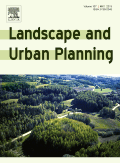
Caitlin K.Kirby, Kathrin Specht, Runrid Fox-Kämper, Jason K.Hawes, Nevin Cohen, Silvio Caputo, Rositsa T.Ilieva, Agnès Lelièvre, Lidia Poniży, Victoria Schoen, Chris Blythe. 2021.
Landscape and Urban Planning, DOI:10.1016/j.landurbplan.2021.104110
Abstract:Urban agriculture is an increasingly popular approach to addressing negative social and health effects of cities. Social benefits of urban agriculture include improved health and wellbeing, economic opportunities, social cohesion, and education. However, the extent to which urban agriculture participants are motivated by or experience these impacts has rarely been measured quantitatively, especially across the many different types of urban agriculture. We analyzed survey data from 74 urban agriculture sites in France, Germany, Poland, the United Kingdom, and the United States to quantitatively assess the relationships between urban agriculture types, farmers and gardeners’ motivations, and the social impacts of urban agriculture. Through factor analysis, we established valid and reliable measurements of participants’ motivations and impacts. We identified four scales: general wellbeing impacts, nutritional health impacts, economic interests, and socialization motivations. Through multivariate analysis of variance, we document significant differences in motivations and reported impacts across types of urban agriculture. Finally, we conducted a multilevel multivariate analysis to explore the predictors of general wellbeing impacts. Participants with stronger economic interests, stronger socialization motivations, and who are owners or primary operators of their plots would be predicted to report greater general wellbeing impacts of urban agriculture. These results provide data about the impacts of urban agriculture projects that enable urban planners and policymakers to maximize the desired social benefits of urban agriculture.
Keywords: Urban AgricultureHealth and WellbeingMotivationsCommunity GardensUrban Farms
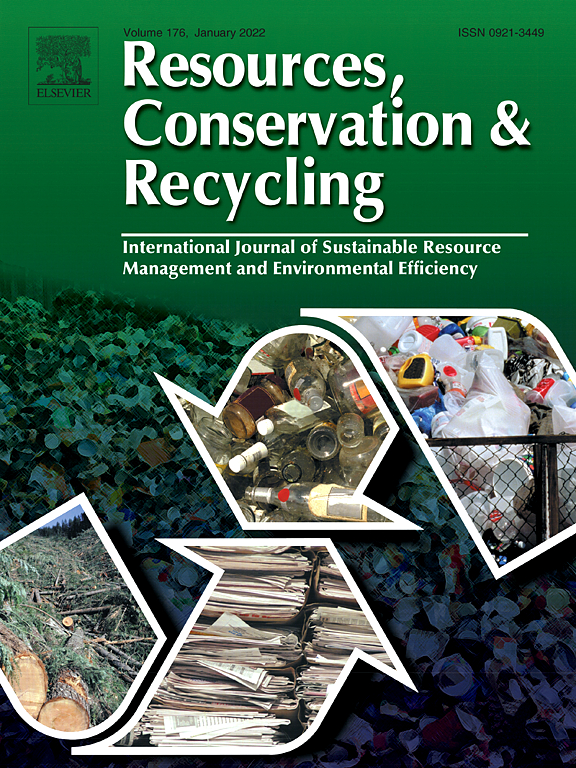
Calli VanderWilde, Joshua Newell. 2021.
Resource, Conservation & Recycling, DOI:10.1016/j.resconrec.2021.105461
Abstract:This paper uses bibliometric mapping and network analysis to review decades of research on ecosystem services and life cycle assessment (LCA). The study reveals how these two academic fields evolved to become distinct fields with little interaction despite shared environmental sustainability objectives. In assessing more than 56,000 publications, we identified just 91 LCA studies that integrate biotic ecosystem services in a meaningful way. We further classified these papers based on an ecosystem service standardization system – the Common International Classification for Ecosystem Services (CICES) – and the use of LCA midpoints and endpoints. LCA research has focused on a relatively small number of regulation and maintenance ecosystem services (especially carbon balance), with far less emphasis on provisioning services. Research on cultural services is especially scarce. Land use is a particularly promising area for integrative ecosystem services–LCA research but will require more sophisticated accounting of geographic and temporal variation, as well as the dynamic exchanges of flows between regions. We conclude by illustrating how Geographic Information Science (GIScience) can help address these challenges, enabling much deeper and wider integration of ecosystem service accounting in the LCA field.
Keywords: Ecosystem ServicesLife cycle assessmentLand useGIS

Kimin Cho, Benjamin Goldstein, Dimitrios Gounaridis, Joshua Newell. 2021.
Journal of Environmental Managemnet, DOI:10.1016/j.jenvman.2020.111482
Abstract:The United States (U.S.) imports 87 percent of its avocados from a single Mexican region, Michoacán. Although environmental and social costs associated with avocado production are significant, consumers and retailers in the U.S. cannot clearly discern them in part due to complex, opaque supply chains. In this paper, we use a novel methodology, TRAcking Corporations Across Space and Time (TRACAST), to reconstruct avocado supply chains between the U.S. retailers and Mexican producers and exporters. Using remote sensing and machine learning, we document how avocado plantations are associated with deforestation in Michoacán, whose forests are important reservoirs for biodiversity, especially for the Monarch butterfly (Danaus plexippus). We estimate that ~20% of the total deforestation in Michoacán between 2001 and 2017 is associated with the expansion of avocado plantations. Despite these impacts, interviews reveal that industry associates (namely, representatives of firms and associations) do not consider avocado production to be a driver of deforestation in the region. This disconnect between actual and perceived environmental impacts can be addressed by the U.S. governmental agencies that play influential roles in regulating avocado imports for sanitary and health purposes and by the vertically integrated avocado trading firms that connect Michoacán packing houses to Kroger, Costco, and other prominent U.S. grocers. Key measures to make the U.S.–Mexico avocado supply chain more sustainable include conventional regulatory tools, greater transparency, and improved governance through multi-stakeholder initiatives.
Keywords: AvocadoDeforestationSupply chain transparencyUS-Mexico Trade
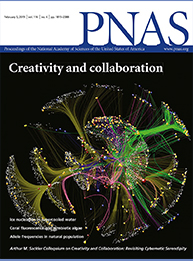
Benjamin Goldstein, Dimitrios Gounaridis, Joshua P. Newell. 2020.
Proceedings of the National Academy of Sciences, DOI:10.1073/pnas.1922205117
Abstract:Residential energy use accounts for roughly 20% of greenhouse gas (GHG) emissions in the United States. Using data on 93 million individual households, we estimate these GHGs across the contiguous United States and clarify the respective influence of climate, affluence, energy infrastructure, urban form, and building attributes (age, housing type, heating fuel) in driving these emissions. A ranking by state reveals that GHGs (per unit floor space) are lowest in Western US states and highest in Central states. Wealthier Americans have per capita footprints ∼25% higher than those of lower-income residents, primarily due to larger homes. In especially affluent suburbs, these emissions can be 15 times higher than nearby neighborhoods. If the electrical grid is decarbonized, then the residential housing sector can meet the 28% emission reduction target for 2025 under the Paris Agreement. However, grid decarbonization will be insufficient to meet the 80% emissions reduction target for 2050 due to a growing housing stock and continued use of fossil fuels (natural gas, propane, and fuel oil) in homes. Meeting this target will also require deep energy retrofits and transitioning to distributed low-carbon energy sources, as well as reducing per capita floor space and zoning denser settlement patterns.
Keywords: SustainabilityClimate ChangeBuilt EnvironmentEnergyCities
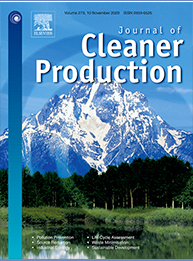
Sanaz Chamanara, Benjamin Goldstein, Joshua P. Newell. 2020.
Journal of Cleaner Production, DOI:10.1016/j.jclepro.2020.123744
Abstract:Although the environmental and social burdens associated with the production of beef are well-understood, due to supply chain complexities, we rarely know precisely where these impacts occur or who is affected. This limitation is a barrier to more sustainable production and consumption of animal products. In this study, we combine life cycle thinking with an environmental justice approach to map Costco’s beef supply chain in California and to explore the environmental burden of air pollution (PM2.5) due to beef production in the San Joaquin Valley, a region that has some of the worst air quality in the United States. To map the supply chain of one of Costco’s primary suppliers, Harris Ranch, and the feedlots they operate, the study uses a methodological framework known as Tracking Corporations Across Space and Time (TRACAST). Our modeling revealed that feedlots produce ∼95% of total PM2.5 emissions across the beef supply chain, and they alone account for approximately 1/3 of total anthropogenic PM2.5 emissions in the Valley. PM2.5 concentrations are markedly higher around these facilities. The spatial analysis revealed that communities living near feedlots are often poor, predominantly Latinx and have increased PM2.5 related disease burdens, including asthma, heart disease and low weight birth. Based on company documents and news reports, neither Costco nor Harris Ranch are addressing this environmental injustice. Documenting the geographically specific impacts of livestock production opens up opportunities for corporations to address environmental injustices in their supply chains through more sustainable sourcing and production practices, and for consumers to rethink their consumption of meat.
Keywords: Environmental justiceAir pollutionCaliforniaCorporate social sustainabilityLivestock

Dimitrios Gounaridis, Joshua P. Newell, Robert Goodspeed. 2020.
Landscape Ecology, DOI:10.1007/s10980-020-01075-9
Abstract: Context: Urban sprawl typically consists of low-density urban development dominated by single-family housing and automobile-oriented land use patterns. Sprawl impacts landscape structure and composition, especially along the urban periphery. However, few studies have simultaneously examined sprawl at the building level and by building type (e.g. single family, multi-family) and its relationship to forest landscapes within an urbanizing region. Objectives:(1) To map and quantify 30-years of sprawl and assess its impacts on forest landscapes in southeast Michigan, a seven-county region centered on the City of Detroit (2) to investigate how different building types, densities, and distances affect forest structure. Methods: We used the Random Forests algorithm to analyze high resolution remote-sensing imagery and computed three landscape metrics of forest fragmentation and cohesion, incorporating data on built types and densities. Finally, we investigated the relationship between single-family housing sprawl and forest landscape functionality. Results: The built-up expansion was correlated with an increase in overall tree canopy in the region. However, multilevel analysis revealed these same forest landscapes became less cohesive and more fragmented over time as a result of urban sprawl. Additional correlation tests revealed an increase in patch density and decrease in effective mesh size (meff) and patch cohesion in areas proximate to low-density single-family housing. Conclusions:The analysis documents how urban sprawl negatively impacts forested landscapes. Single-family housing in particular had a detrimental impact on the functionality of adjacent forested landscapes. High thematic resolution enables policy-makers and planners to identify specific policies and interventions to increase landscape functionality.
Keywords: Urban-sprawlRandom Forests algorithmRemote Sensingsingle-family housing sprawl

Joshua P. Newell, Anu Ramaswami. 2020.
Environmental Research Letters, DOI:10.1088/1748-9326/ab7419
Abstract: With cities producing 80% of global GDP and housing more than half of the world’s population (United Nations Human Settlements Programme UN-Habitat 2016, p. 264), urban processes now drive global flows of food, energy, and water, causing unprecedented disruptions to the planet’s biogeochemical cycles. The procurement of food, energy, and water (FEW) often occurs outside urban boundaries, leading to geographic and sectoral interactions from local to global scales. These unforeseen and complex interactions degrade air and water quality, drive resource use, and exacerbate greenhouse gas emissions (GHGs). FEW-provisioning systems also have profound impacts on the economy and on human health and well-being. The linkages between the systems that supply FEW to cities and the outcomes related to human and planetary well-being are the focus of this special issue. The issue consists of nine articles, each of which presents emerging research on interconnected FEW systems as they relate to cities and regions. The papers are interdisciplinary, multiscalar, and cross-sectoral as they consider the effects of FEW interactions on the health of cities, their inhabitants, and the distant peoples and places from which they source their resources. As a set, including this introduction, the special issue covers the following topics:1. Research to date on urban FEW systems and promising approaches; 2. Urban agriculture and energy–water dynamics; 3. Conventional agriculture and FEW dynamics; 4.The energy foodprint of the American diet; 5. Key areas for future research. In the pages that follow, we briefly summarize each of the articles in this special issue, clustering them by topical areas. We conclude by identifying what we view as crucial research gaps needing further studies in the realm of urban FEW systems.
Keywords: food–energy–water nexusEnergy-Water DynamicsUrban Agricultureliterature review
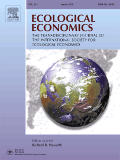
Benjamin Goldstein, Joshua P. Newell. 2020.
Ecological Economics, DOI:10.1016/j.ecolecon.2019.106492
Abstract: Globalization processes lead to supply chains that sprawl across space and time. Where and how products are produced and consumed shape the environmental and social conditions of regions, far and wide. Distance, fluidity, and complexity in supply chains mask their uneven impacts. Researchers have prioritized the study of ‘sectors’ (e.g. automobile manufacturing, garment production) over specific corporations (e.g. Toyota, Nike), even though these corporations `move and shape` the global economy. Research by NGOs reveals the importance of focusing on individual corporations to highlight unsustainable production practices and to foster transparency and accountability. This paper introduces a methodological framework, “TRAcking Corporations Across Space and Time” (TRACAST), to tell the ‘story’ behind a product by systematically linking companies across a supply chain and identifying environmental and social hotspots and key nodes of governance. TRACAST combines in-situ (e.g. interviews, surveys, fieldwork) and ex-situ (e.g. document analysis, mining of trade data) approaches. To illustrate its utility, we link Walmart, Lowe’s, and The Home Depot in the United States to Russian logging companies via Chinese flooring manufacturers. TRACAST enables scholars studying the global flows of goods to engage deeply with questions related to specific corporations and how they affect people and the planet.
Keywords: TRACASTCorporationsEnvironmental Governance

Joshua Newell, Benjamin Goldstein, Alec Foster. 2019.
Environmental Research Letters, DOI:141.211.152.113
Abstract: Essential for society to function, the production and consumption of food, energy, and water (FEW) are deeply intertwined, leading to calls for a nexus approach to understand and manage the complex tradeoffs and cascading effects. What research exists to date on this FEW nexus? How have scholars conceptualized these interactions at the urban scale? What are some promising approaches? Where are the research gaps? To answer these questions, we conducted a quantitative review of the academic literature on the FEW nexus (1399 publications) over more than four decades (1973–2017), followed by in-depth analysis of the most influential papers using an evaluation matrix that examined four components: 1) modeling approach; 2) scale; 3) nexus ‘trigger’; and 4) governance and policy. Scholars in the fields of environmental science predominated, while social science domains were under-represented. Most papers used quantitative rather than qualitative approaches, especially integrated assessment and systems dynamics modeling although spatial scale was generally recognized, explicit consideration of multi-scalar interactions was limited. Issues of institutional structure, governance, equity, resource access, and behavior were also underdeveloped. Bibliometric analysis of this literature revealed six distinct research communities, including a nascent urban FEW community. We replicated the analysis for this urban group, finding it to be just emerging (80% of papers have been published since 2010) and dominated by scholars in industrial ecology. These scholars focus on quantifying FEW flows of the urban metabolism in isolation rather than as a nexus, largely ignoring the political and socio-economic factors shaping these flows. We propose the urban FEW metabolism as a boundary object to draw in diverse scholarly and practitioner communities. This will advance research on complex FEW systems in four key areas: (1) integration of heterogeneous models and approaches; (2) scalar linkages between urban consumption and trans-boundary resource flows; (3) how actors and institutions shape resource access, distribution and use; and (4) co-production of knowledge with stakeholders.
Keywords: food–energy–water nexusUrban metabolismliterature review

Alec Foster, Joshua Newell. 2019.
Landscape and Urban Planning, DOI:10.1016/j.landurbplan.2019.04.009
Abstract: Informal footpaths known as desire lines crisscross the city of Detroit and are visible from space. Despite their prevalence, especially in postindustrial cities, no comprehensive study of desire lines exists for any urban area. How extensive are these lines, how do people use them, and how are they changing over time? What is their potential to reinvigorate the fabric of neighborhoods and communities? We conducted a spatiotemporal analysis of desire lines in Detroit by combining remote sensing and spatial analysis with physical audits and interviews. Our results show that Detroit has more than 5680 of these footpaths, totaling more than 150 miles (> 240 km). Transportation planners may value desire lines for their efficiency, reducing travel time and distance. Urban theorists and community activists, however, view desire lines as a form of resistance and reclamation of space for a public poorly served by urban institutions. The results of our mixed-methods approach demonstrate how these two perspectives can co-exist. Desire lines are creative attempts to expand urban possibilities, enhance efficiency, and reaffirm agency in increasingly regulated cities. Desire lines in Detroit, however, are rapidly disappearing. From 2010 to 2016, the Lower Eastside region of the city witnessed a 70 percent reduction in the total length of these lines. Our analysis shows that this correlates with changes in land ownership, management practices, and population dynamics. The loss of desire lines exposes the limits of informal practices and indicates the need for connections to broader relationships of power and governance. Creative engagements with the state can formalize lines and help residents realize their rights to the city.
Keywords: Desire LinesUrban SustainabilityCommunity ResilienceLegecy CitiesFootpathDetroit

Zhang, Z, Meerow, S, Newell, J.P., Lidquist, M. 2019.
Urban Forestry and Urban Greening, DOI:0.1016/j.ufug.2018.10.014
Abstract: Landscape connectivity is critical for ecosystem health and biodiversity conservation, yet urbanization is increasing habitat fragmentation. Green corridors that connect isolated remnant habitat patches (e.g. parks) can increase connectivity and provide ecosystem services in cities. Vacant land, especially prevalent in shrinking cities, presents a unique opportunity to reconnect these landscapes. This paper provides a practical and replicable approach for assessing landscape connectivity patterns and identifying priority locations for green corridors. The methodology integrates social and ecological factors coupled with site-scale multifunctional greenway designs and is applied to the city of Detroit as a proof of concept. First, we use FRAGSTATS to evaluate structural landscape connectivity patterns at a census tract scale. A functional connectivity assessment based on graph theory and Conefor software is used to validate the results, which indicate that habitat is highly fragmented in Detroit. To identify opportunities to reduce this fragmentation, we use a least-cost path approach to map potential green corridors linking city parks through vacant parcels, alleys, and smaller green spaces, and prioritize these corridors using a gravity model and network analysis. To make the model more concrete and useful for decision-makers, we develop site-level multifunctional corridor design typologies. This study presents a novel approach to assessing urban connectivity and a multi-scalar, systematic methodology for planning urban green infrastructure networks that connects landscape ecology with practical planning and design considerations to maximize social and ecological functions.
Keywords: Landscape ConnectivityGreen InfrastructureCorridorsVacant LandsHabitat FragmentationDetroit
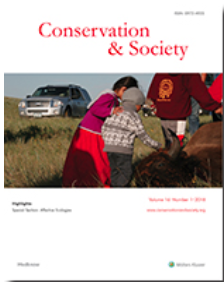
Foster, Alec. 2018.
Conservation and Society, DOI: 10.4103/cs.cs_16_49
Abstract: Recent research has critically evaluated the rapid growth of volunteer urban environmental stewardship. Framings of this phenomenon have largely focused upon environmentality and/or neoliberal environments, unfortunately often presenting a totalising picture of the state and/or market utilising power from above to create environmental subjects with limited agency available to local citizens. Based upon qualitative research with volunteer urban environmental stewards in Philadelphia, affective labour is proposed as an alternative explanation for participation. Stewards volunteered their time and labour due to the intense emotional attachments they formed with their neighbourhoods, neighbours, and nonhuman others in relationships of affective labour. Volunteer urban environmental stewardship as affective labour provides room for agency on the part of individuals and groups involved in volunteer urban environmental reproduction and opens up new ways of relating to and being with human and nonhuman others.
Keywords: Environmental IdentitiesAffective LabourEnvironmentalityNeoliberalismVolunteerismPhiladelphia
Newell, J.P., Cousins, J.C. & J. Baka. 2017.
Geoforum, DOI: 10.1016/j.geoforum.2017.07.024

Kim, O.H., Nugent, J.B., Yi Z., Newell, J.P. & A.C. Curtis. 2017.
Forests, DOI: 10.3390/f8050162
Abstract: This paper introduces a mixed method approach for analyzing the determinants of natural latex yields and the associated spatial variations and identifying the most suitable regions for producing latex. Geographically Weighted Regressions (GWR) and Iterative Self-Organizing Data Analysis Technique (ISODATA) are jointly applied to the georeferenced data points collected from the rubber plants in Xishuangbanna (in Yunnan province, south China) and other remotely sensed spatial data. According to the GWR models, Age of rubber tree, Percent of clay in soil, Elevation, Solar radiation, Population, Distance from road, Distance from stream, Precipitation, and Mean temperature turn out statistically significant, indicating these are major determinants shaping latex yields at the prefecture level. However, the signs and magnitudes of the parameter estimates at the aggregate level are different from those at the lower spatial level, and the differences are due to diverse reasons. The ISODATA classifies the landscape into three categories: high, medium, and low potential yields. The map reveals that Mengla County has the majority of land with high potential yield, while Jinghong City and Menghai County show lower potential yield. In short, the mixed method can offer a means of providing greater insights in the prediction of agricultural production
Keywords: Agricultural yieldGeographically weighted regressionIterative self-ordering data analysis techniquerubber plantationXishuangbannaMekong region
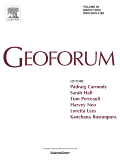
Pincetl, Stephanie, & J.P. Newell. 2017.
Geoforum, DOI: 10.1016/j.geoforum.2017.03.002
Abstract: Despite our declared era of ‘Big Data’, we lack information on the flows of energy, water, and materials that support modern societies. these data are essential to understand how ecologies and the labor of people in far flung places supply urban areas, as well as how these resource flows are used by whom, where, and for what purpose. Like other places, the state of California is struggling with issues of data privacy and access. water scarcity and the state’s commitments to greenhouse gas emission (GHG) mandates raise the issue of consumption and the unequal burdens that derive from it. These mandates have unveiled the lack of comparable and verifiable data to understand crucial production-consumption dynamics. This paper illustrates how spatially-explicit big data can be harnessed to delineate and urban political-industrial ecology of resource flows. Based on research using address-level energy and water use consumption data for Los Angeles County, the analysis reveals how the region’s wealthy residents use a disproportionate share of the water and energy resources. the paper also identifies structural obstacles to increasing fees and taxes or altering property rights that would reduce this consumption and foster more equitable resource use. This study has implications for theory, method, and policy related to urban sustainability, which is unobtainable without first unraveling the political-industrial ecology of the material basis of urbanization processes.

Meerow, Sara, & J.P. Newell. 2017.
Landscape and Urban Planning, DOI: 10.1016/j.landurbplan.2016.10.005
Abstract: Cities are expanding green infrastructure to enhance resilience and ecosystem services. Although green infrastructure is promoted for its multifunctionality, projects are typically sited based on a particular benefit, such as stormwater abatement, rather than a suite of socio-economic and environmental benefits. This stems in part from the lack of stakeholder-informed, city-scale approaches to systematically identify ecosystem services tradeoffs, synergies, and ‘hotspots’ associated with green infrastructure and its siting. To address this gap, we introduce the Green Infrastructure Spatial Planning (GISP) model, a GIS-based multi-criteria approach that integrates six benefits: 1) stormwater management; 2) social vulnerability; 3) green space; 4) air quality; 5) urban heat island amelioration; and 6) lanscape connectivity. Stakeholders then weight priorities to identify hotspots where green infrastructure benefits are needed most. Applying the GISP model to Detroit, we compared the results with the locations of current green infrastructure projects. The analysis provides intital evidence that green infrastructure is not being sited in high priority areas for stormwater abatement, let alone for ameliorating urban heat island effects, improving air quality, or increasing habitat connectivity. However, as the Detroit GISP model reveals, it could be developed in locations that simultaneously abate stormwater, urban heat island, and air pollution. Tradeoffs exist between siting to maximize stormwater management versus landscape connectivity. The GISP model provides and inclusive, replicable approach for planning future green infrastructure so that it maximizes social and ecological resilience. More broadly, it represent a spatial planning approach for evaluating competing and complementary ecosystem service priorities for a particular landscape.
Keywords: Green infrastructureEcosystem servicesResilienceDetroit
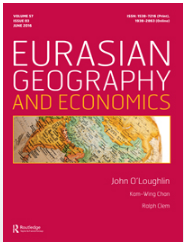
Newell, J.P. & Henry, L.A. 2017.
Eurasian Geography and Economics, DOI: 10.1080/15387216.2017.128951.
Abstract: In the 25 years since the dissolution of the Soviet Union, sweeping political, economic, and social changes have profoundly influenced environmental protection in Russia, the world’s largest county and one of global importance with respect to natural resources, biodiversity conservation, wilderness preservation, and climate change mitigation. This paper reviews the state of the environment by assessing post-Soviet era changes to the legislation, government regulatory institutions, and civil society. A gulf exists between Russia’s formal environmental laws and state agency capacity and interest in enforcing them. This stems, in part, from repeated bureaucratic reorganizations that progressively eroded environmental institutions. The Russian environmental movement, which blossomed during Gorbachev’s reforms in the late 1980s, struggled in the 1990s to mobilize the broader public due to economic hardship and political instability. Since then, the Putin administration has labeled many environmental groups “anti-Russian” and used aggressive tactics such as raiding NGO offices, intimidating journalists, and instituting severe legislative measures to quash advocacy and dissent. Post-Soviet environmental successes have been relatively few, with expansion of the protected area system and forest certification notable exceptions. These successes can partly be attributed to efforts by large environmental organizations, but expansion of certification and corporate social responsibility is also tied to Russian business interests dependent on natural resource exports to global markets increasingly sensitive to environmental concerns. the paper concludes by illustrating how corruption, poor enforcement, and the muzzling of civil society render the state incapable of resolving arguably its most significant environmental challenge: illegal and unregulated resource use.
Keywords: Russiaenvironmentinstitutionscivil societyPutincorruptionillegality
Meerow S., Newell, J.P.2016.
Urban Geography, DOI: 10.1080/02723638.2016/1206395.
Abstract: In academic and policy discourse, the concept of urban resilience is proliferating. Social theorists, especially human geographers, have rightfully criticized that the underlying politics of resilience have been ignored and stress the importance of asking “resilience of what, to what, and for whom?” This paper calls for careful consideration of not just resilience for whom and what, but also where, when, and why. A three-phase process is introduced to enable these “five Ws” to be negotiated collectively and to engender critical reflection on the politics of urban resilience as plans, initiatives, and projects are conceived, discussed, and implemented. Deployed through the hypothetical case of green infrastructure in Los Angeles, the paper concludes by illustrating how resilience planning trade-offs and decisions affect outcomes over space and time, often with significant implications for equity.
Keywords: urban resilienceurban sustainabilitysocial-ecological systemsvulnerability

Meerow, S., Stults, M. 2016.
Sustainability, DOI: 10.3390/su8070701.
Abstract: In the face of climate change, scholars and policymakers are increasingly concerned with fostering “urban resilience”. This paper seeks to contribute towards a better understanding of synergies and differences in how academics and local decision-makers think about resilience in the context of climate change. We compare definitions and characteristics of urban climate resilience in the academic literature with a survey of 134 local government representatives from across the U.S. Our analysis shows discrepancies in how academics and practitioners define and characterize urban climate resilience, most notably in their focus on either “bouncing back” or bouncing forward” after a disturbance. practitioners have diverse understandings of the concept, but ten to favor potentially problematic “bouncing back” or engineering based definitions fo resileince. While local government respondents confirm the importance of all 16 resilience characteristics we identified in the academic literature, coding practitioners’ free response definitions reveals that they rarely mention qualities commonly associated with resilience in the scholarly literature such as diversity, flexibility, and redundancy. these inconsistencies need to be resolved to ensure both the usability of climate resilience research and the effectiveness of resilience policy.
Keywords: climate changeresilienceurban resilienceresilient city
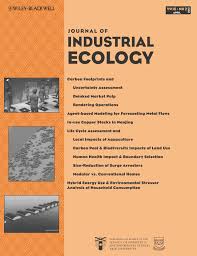
Liang, S., Guo, S., Newell, J.P., Feng, Y., Chin, A., Xu, M. 2016.
Journal of Industrial Ecology, DOI: 10.1111/jiec.12417.
Abstract: Russian forest resources are important for global carbon cycling. In contrast to traditional analyses that focus on the harvest and direct use of Russian timber resources (a.k.a. production-based accounting), this study investigates how the consumption of nations drives Russian timber harvest (a.k.a. consumption-based accounting or the Russian timber footprint). China is the biggest direct importer and final consumer of Russian timber. The United States, Japan, and major European countries directly import relatively small amounts of Russian timber, but serve to drive large amounts of Russian timber harvest through their final consumption. Through structural path analysis, individual supply chain paths are delineated to show linkages between Russian timber harvest and the final consumption of nations. Findings of this study inform consumption-side measures for Russian forest conservation, for example, taking shared responsibility and improving the production efficiency of key sectors in consuming nations.
Keywords: adaptationadaptive capacityclimate changesocio-ecological systems

Meerow, S., Newell, J.P., & Stults, M. 2016.
Landscape and Urban Planning, DOI: 10.1016/j.landurbplan.2015.11.011.
Abstract: Fostering resilience in the face of environmental, socioeconomic, and political uncertainty and risk has captured the attention of academics and decision makers across disciplines, sectors,and scales. Resilience has become an important goal for cities, particularly in the face of climate change. Urban areas house the majority of the world’s population, and, in addition to functioning as nodes of resource consumption and as sites for innovation, have become laboratories for resilience, both in theory and in practice. This paper reviews the scholarly literature on urban resilience and concludes that the term has not been well defined. Existing definitions are inconsistent and underdeveloped with respect to incorporation of crucial concepts found in both resilience theory and urban theory. Based on this literature review, and aided by bibliometric analysis, the paper identifies six conceptual tensions fundamental to urban resilience. To advance this burgeoning field, more conceptual clarity is needed. This paper, therefore, proposes a new definition of urban resilience. This definition takes explicit positions on these tensions, but remains inclusive and flexible enough to enable uptake by, and collaboration among, varying disciplines.
Keywords: urban resilienceadaptationadaptive capacityclimate changeresilient citiessocio-ecological systems
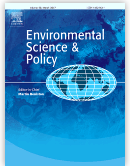
Nordgren, J., Stults, M., Meerow, S. 2016.
Environmental Science & Policy, DOI: 10.1016/j.envsci.2016.05.006.
Abstract: Local governments are on the front line of efforts to address climate-related impacts. recognizing this, there is a growing movement to develop and deliver tools, resources, and services to support local communities’ adaptation initiatives. There is, however, limited understanding of what specific types of resources exist and how well these resources match the needs of local practitioners. To bring clarity to these questions, we: 1) assessed the current landscape of climate-adaptation resources and services; 2) surveyed community practitioners to learn how well these resources align with their needs; and 3) convened leading service providers and local practitioners to identify strategic opportunities for moving the adaptation field forward. Findings demonstrate that existing services and resources are meeting the early phases of local adaptation efforts such as conducting vulnerability assessments and creating adaptation plans, but are failing to meet the needs associated with implementing, monitoring, and evaluating adaptation activities. Additionally, a lack of funding and staff time to support adaptation, as well as inaccessible resource formats are barriers impeding local climate adaptation efforts. The mismatch between the types and formats of services being provided and the needs of local governments means that more work is needed to ensure that climate adaptation resources are responsive to the existing and future needs of local governments. Moreover, our research finds that there is a strong and growing need to organize and streamline the climate adaptation resource and service landscapes so that practitioners can easily, effectively, and efficiently access the resources they need to build more resilient local communities.
Keywords: climate adaptationclimate serviceslocal governmenttlocal communityadaptation resources
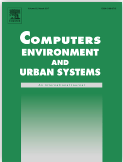
Foster, A. & Dunham, I.M. 2015.
Computers, Environment and Urban Systems, DOI: 10.1016/j.compenvurbsys.2014.08.001.
Abstract:Volunteered Geographic Information (VGI) and urban forests have recently become topics of interesting interest in the social sciences. While social and environmental justice concerns have been applied to each of these topics individually, this paper addresses VGI, urban forests, and social justice simultaneously. VGI has often been hailed as an emerging and democratic new form of citizen science that allows data collection tasks to be distributed to a large group of people; however, concerns have emerged about whose geographies will be volunteered, and for what purpose. This research addresses these concerns, with an understanding that VGI has the potential to strengthen, rather than dissolve the digital divide. This is accomplished by determining the completeness of coverage of user-generated urban forest mapping on the interactive website PhillyTreeMap (http://www.phillytreemap.org/) by comparing it with high resolution remotely sensed canopy coverage data. these coverage levels are then regressed against Census demographic data at the block group level to determine if there are inequities in the coverage of this urban forest VGI project based upon socioeconomic status. results indicate that sociodemographic variables influence the likelihood of increased coverage of the urban forest VGI data, presenting equity concerns. the presence of these social and environmental justice concerns indicates the need for expanded research into this new frontier of geographic data. Geographically weighted general linear models show non-stationarity in the relationships between VGI coverage and sociodemographic predictors, demonstrating the importance of incorporating local models
Keywords: volunteered geographic informationurban forestsdigital dividesocial justicegeographically weighted general linear models
Dunham, I.M. & Foster, A. 2015.
The Professional Geographer, DOI: 10.1080/00330124.2014.907697.
Abstract:Although mainstream banking institutions offer a suite of benefits to patrons, the proportion of U.S. households that are unbanked and underbanked remains persistently high. This study examines the spatial relationship between alternative financial service providers (AFSPs) and banks and neighborhood demographics in southeastern Pennsylvania. Results from spatial regression analyses reveal that AFSPs are disproportionately located in close proximity to neighborhoods with comparatively lower levels of educational attainment and higher rates of subprime mortgage lending, whereas banks are disproportionately located in close proximity to neighborhoods with comparatively higher levels of income and educational attainment and a lower percentage of minority residents.
Keywords: bank accesseconomic inclusionspatial regressionunbanked/underbankedurban inequality
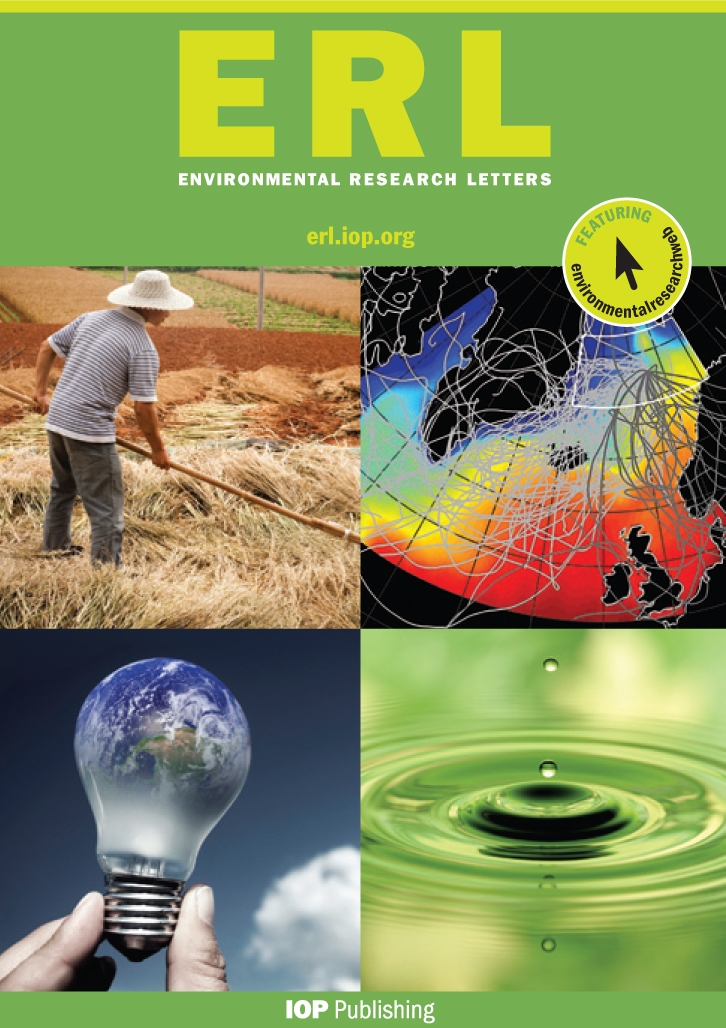
Fang, A., Newell, J.P., & Cousins, J.J. 2015.
Environmental Research Letters, DOI: 10.1088/1748-9326/10/11/114002.
Abstract: Due to climate change and ongoing drought, California and much of the American West face critical water supply challenges. California’s water supply infrastructure sprawls for thousands of miles, from the Colorado River to the Sacramento Delta. Bringing water to growing urban centers in Southern California is especially energy intensive, pushing local utilities to balance water security with factors such as the cost and carbon footprint of the various supply sources. To enhance water security, cities are expanding efforts to increase local water supply. But do these local sources have a small carbon footprint than imported sources? To answer this question and others related to the urban water-energy nexus, this study uses spatially explicit life cycle assessment to estimate the energy and emissions intensity of water supply for two utilities in Southern California: Los Angeles Department of Water and Power, which serves Los Angeles, and the Inland Empire Utility Agency, which serves the San Bernardino region. This study differs from previous research in two significant ways: (1) emissions factors are based not on regional averages, but on the specific electric utility and generation sources supplying energy throughout transport, treatment, and distribution phases of the water supply chain; (2) upstream (non-combustion) emissions associated with the energy sources are included. This approach reveals that in the case of water supply to Los Angeles, local recycled water has a higher carbon footprint than water imported from the Colorado River. In addition, by excluding upstream emissions, the carbon footprint of water supply is potentially underestimated by up to 30%. These results have wide-ranging implications for how carbon footprints are traditionally calculated at local and regional levels.
Keywords: water supplyCaliforniacarbon footprintdroughtlife cycle assessmentenergy
Cousins, J., & Newell, J.P. 2015.
Progress in Human Geography, DOI: 10.1177/0309132514558442.
Abstract: This paper considers the limits and potential of ‘urban metabolism’ to conceptualize city processes. Three ‘ecologies’ of urban metabolism have emerged. Each privileges a particular dimension of urban space, shaped by epistemology, politics, and model-making. Marxist ecologies theorize urban metabolism as hybridized socio-natures that reproduce uneven outcomes; industrial ecology, as stocks and flows of materials and energy; and urban ecology, as complex socio-ecological systems. We demarcate these scholarly islands through bibliometrics analysis and literature review, and draw on cross-domain mapping theory to unveil how the metaphor has become stagnant in each. To reinvigorate this research, the paper proposes the development of political-industrial ecology, using urban metabolism as a boundary metaphor.
Keywords: urban metabolismboundary objectindustrial ecologyinterdisciplinary researchurban ecologypolitical ecology
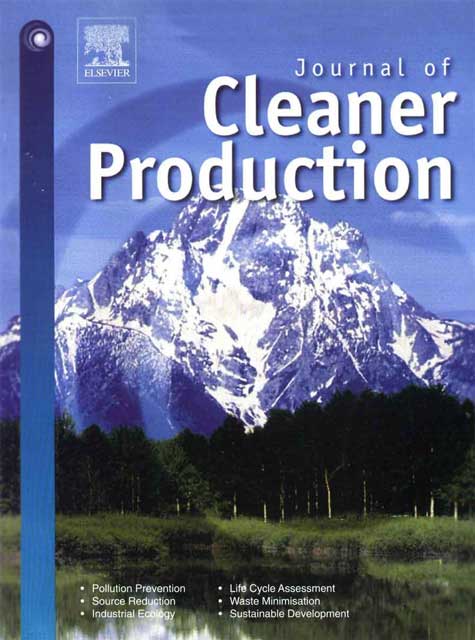
Pandit, A., Minne, E.A., Li, F., Brown, H., Jeong, H., James, J-AC., Newell, J., Weissburg, M., Chang, M.E., Xu, M., Yang, P., Wang, R., Thomas, V.M., Yu, X., Lu, Z., & Crittenden, J.C. 2015.
Journal of Cleaner Production, DOI: 10.1016/j.jclepro.2015.09.010.
Abstract: Increasing urbanization places cities at the forefront of achieving global sustainability. For cities to become more sustainable, however, the infrastructure on which they rely must also become more productive, efficient and resilient. Unfortunately, the current paradigm of urban infrastructure development is fragmented in approach lacking a systems perspective. Urban infrastructure systems are analogous to ecological systems because they are interconnected, complex and adaptive components that exchange material, information and energy among themselves and to and from the environment, and exhibit characteristic scaling properties that can be expressed by Zipf’s Law. Analyzing them together as a whole, as one would do for an ecological system, provides a better understanding about their dynamics and interactions, and enables system-level optimization. The adoption of this “infrastructure ecology” approach will result in urban redevelopment that requires lower investment of financial and natural resources to build and maintain, is more sustainable and resilient, and enables greater and more equitable opportunities for the creation of wealth and comfort. The 12 guiding principles of infrastructure ecology will provide a set of goals for urban planners, engineers and other decision-makers in an urban system for urban redevelopment.
Keywords: infrastructureurban ecologycomplexityZipf’s Lawresiliencesustainability

Meerow, S & J.P. Newell. 2015.
Journal of Industrial Ecology, DOI: 10.1111/jiec.12252
Abstract: Resilience is an increasingly popular concept in academic research and public discourse and is closely connected to complex systems theory. This article reviews research on resilience and complexity in industrial ecology and the broader academy by conducting a bibliometric analysis of the academic literature over a 40-year period (1973–2014). The review revealed a large body of scholarship composed of five clearly identifiable intellectual communities, with resilience theory from ecology especially influential. Based on the study of ecosystems, these scholars conceptualize resilience as a dynamic and adaptive property of systems with multiple stable states that evolve over time. In comparison, resilience research in industrial ecology is limited and underdeveloped. Bibliometric analysis of this literature yielded just 37 publications and a scholarly network with no well-formulated research communities. This contrasts with industrial ecology scholarship on sustainability; a similar search yielded 1,581 publications. Given the emerging importance of the resilience concept and its relevance for sustainability issues, industrial ecology should expand research efforts in this area. The growing body of industrial ecology scholarship on complex systems provides a foundation to do so, as does the field’s long-standing practice of using ecological principles to inform the study and design of industrial ecosystems. The article concludes by discussing how industrial ecology would benefit from incorporating principles of dynamic resilience and, conversely, how industrial ecology approaches could advance broader resilience scholarship.
Keywords: bibliometricscomplex systemscomplexityindustrial ecologyresiliencesustainability
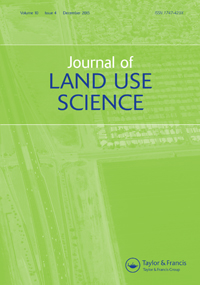
Kim, O.S. & Newell, J.P.
Journal of Land Use Science, DOI: 10.1080/1747423X.2014.947640.
Abstract: This paper proposes a new land-change model, the Geographic Emission Benchmark (GEB), as an approach to quantify land-cover changes associated with deforestation and forest degradation. The GEB is designed to determine ‘baseline’ activity data for reference levels. Unlike other models that forecast business-as-usual future deforestation, the GEB internally (1) characterizes ‘forest’ and ‘deforestation’ with minimal processing and ground-truthing and (2) identifies ‘deforestation hotspots’ using open-source spatial methods to estimate regional rates of deforestation. The GEB also characterizes forest degradation and identifies leakage belts. This paper compares the accuracy of GEB with GEOMOD, a popular land-change model used in the UN-REDD (Reducing Emissions from Deforestation and Forest Degradation) Program. Using a case study of the Chinese tropics for comparison, GEB’s projection is more accurate than GEOMOD’s, as measured by Figure of Merit. Thus, the GEB produces baseline activity data that are moderately accurate for the setting of reference levels.
Keywords: complexityadaptationadaptive capacityland use changeforestsresource consumption
Cousins, J. & J.P. Newell. 2015.
Geoforum, 58: 38-50.
Abstract: This paper develops a political-industrial ecology approach to explore the urban water metabolism of Los Angeles. Conventional approaches to quantify urban carbon footprints tend to “black box” methodologies that guide the carbon emissions calculus and the social, political, ecological, and economic processes that perpetually reshape nature-society metabolisms. To more fully delineate the water supply metabolism of Los Angeles, this paper combines theory and method from urban political ecology and industrial ecology. This approach offers valuable insights into the spatiality of material metabolisms and the socio-political processes reshaping the relations between nature and society.
Wolch, J.R, Byrne, J., & J.P. Newell. 2014.
Landscape and Urban Planning, 125: 234-244.
Abstract: Urban green space, such as parks, forests, green roofs, streams, and community gardens provide critical ecosystem services, as well as promote physical activity, psychological well-being, and the general public health of urban residents. Recognizing these benefits, many US cities have implemented strategies to increase the supply of green urban space, especially in park-poor neighborhoods. However, urban green space strategies may be paradoxical. Strategies that are “just green enough”, and that protect both social and ecological sustainability, deserve more attention, as the creation of new green space can lead to gentrification and displacement of the very individuals it is intended to benefit.View this article featuring Jennifer Wolch on “eco-gentrification”.
Keywords: urban green spacesecosystem serviceshuman healthenvironmental justiceplanning strategiesgentrification
Lee, K.C.L., Newell, J.P., Wolch, J., Schneider, N. & P. Joassart-Marcelli. 2014.
Society & Natural Resources, 27(9): 948-963.
Abstract: Despite widespread media coverage of livestock-related issues and growing scientific evidence linking meat production and climate change, systematic content analysis of this relationship in media coverage has been surprisingly minimal. In this article, we coded livestock-related articles from the Los Angeles Times over the 1990-2010 period to understand how various actants and artifacts shaped different story-networks– how a media report or “story” is framed. Distinctive story-networks framed the livestock-climate change linkage as an issue to be addressed through either technological innovation, individual lifestyle choices, or policy action.
Keywords: actor-network theory (ANT)climate changeframing theorylivestockstory-networks
Newell, J.P. & J. Simeone. 2014.
Eurasian Geography and Economics. Advanced online publication, 55(1): 1-34.
Abstract: Using production and trade flow data from 1946 to 2012, this paper assesses the state of Russia’s forest resources and demonstrates how sweeping changes ushered in by perestroika and globalization have forged a highly export-dependent forest sector. In tracking these flows through China to US urban centers, we demonstrate how consumption patterns affect ecosystems and socioeconomic relations in resource and manufacturing peripheries far beyond regional and national borders. The research is illustrative of how the “ecological shadow” of forest change and degradation in post-Soviet Russia is a confluence of factors related to both consumption and production.
Keywords: RussiaChinaland use changeresource consumptionforestsillegal loggingenvironmentgovernancematerial flow analysisregion
Reynolds, K.D., Dahmann, N., Wolch, J.R., Joassart-Marcelli, P., Dunton, G., Rudulph, D., Newell, J.P., Thayer, J., & M. Jerrett. 2014.
Health & Place, 28: 67-72.
Abstract: While literature describes the influence of parks on physical activity, and identifies factors contributing to park utilization, little work has been done researching the availability of recreation resources within parks. In this study, an audit of recreation programs with moderate or higher levels of physical activity in Los Angeles area cities was conducted using the internet, telephone, and survey methods. Overall, findings suggest that the capacity of recreational courses to promote energy expenditure may depend on targeted age groups, age of the city’s population, and municipal fiscal capacity.
Keywords: METsrecreationhuman healthparksphysical activityfiscal capacity
Russia’s forests in a global economy: how consumption drives environmental change
Newell, J.P. & J. Simeone. 2014.
Eurasian Geography and Economics. Advanced online publication, 55(1): 1-34.
Abstract: Using production and trade flow data from 1946 to 2012, this paper assesses the state of Russia’s forest resources and demonstrates how sweeping changes ushered in by perestroika and globalization have forged a highly export-dependent forest sector. In tracking these flows through China to US urban centers, we demonstrate how consumption patterns affect ecosystems and socioeconomic relations in resource and manufacturing peripheries far beyond regional and national borders. The research is illustrative of how the “ecological shadow” of forest change and degradation in post-Soviet Russia is a confluence of factors related to both consumption and production.
Keywords: RussiaChinaland use changeresource consumptionforestsillegal loggingenvironmentgovernancematerial flow analysisregion
Newell, J.P., M. Seymour, et al. 2012.
Cities, 31: 144-155.
Abstract: This article analyzes alley greening programs in seven cities in the United States using the lens of sustainability planning. Study results indicate that most alley greening programs are narrowly oriented toward stormwater management. An in-depth exploration of the alley greening program in the city of Los Angeles illustrates a more robust commitment to sustainability– through the adoption of goals related to environmental protection, economic development, and social equity– might be actualized in the context of alley greening efforts.
Keywords: alleysgreen infrastructureurban sustainabilityplanningLos Angeles
Meerow, S. & I. Baud. 2012.
International Journal of Urban Sustainable Development, 4(1): 201-38.
Abstract: “Resilience thinking” is an increasingly popular approach among scholars and policymakers, with advocates heralding it as the successor to the dominant sustainable development paradigm. This article examines two programs for renewable, distributed power generation in Thailand from a resilience perspective. A conceptual model is constructed from the literature and use to analyze the programs based on information from expert interviews and other sources. Results suggest that the programs are increasing the resilience of the system, but their contribution is limited by barriers related to governance.
Keywords: resiliencenetworked governancerenewable energydistributed generationThailand
Xu, M., M. Weissburg, J.P. Newell, & J.C. Crittenden. 2012.
Environmental Science & Technology, 46(15): 7928-7929.
Abstract: Engineering research has conceptualized and modeled cities as an organismic metabolism, consuming energy and materials, and metabolizing them, and generating emissions and waste. But through this material and energy flow analysis, the specific complex interactions between infrastructure systems that shape these flows remain poorly understood. Understanding how these infrastructures interact with each other and how city-level properties emerge from such underlying interactions is fundamental to the design, development, and operation of sustainable urban systems. This article proposes the concept of infrastructure ecology as a way to analyze, via analogical mapping of urban to natural systems, the complex interdependence of urban infrastructure systems, and offer four fundamental research questions to foster the science of this new concept.
Keywords: infrastructure ecologysustainable urban systemsresilient urban infrastructure
Newell, J.P. & R. Vos. 2012.
Environmental Impact Assessment Review, 37(0): 23-36.
Abstract: Modification and loss of forests due to natural and anthropogenic disturbance contribute an estimated 20% of annual greenhouse gas (GHG) emissions worldwide. Although forest carbon pool modeling rarely suggests a ‘carbon neutral’ flux profile, the life cycle assessment community and associated product carbon footprint protocols have struggled to account for the GHG emissions associated with forestry, specifically, and land use generally. In this paper, through a comparative study of U.S. and Chinese coated freesheet paper, we develop the initial foundations for a methodology that rescales IPCC methods from the national to the product level, with reference to the approaches in three international product carbon footprint protocols.
Keywords: forest carbonland use changeland use modificationproduct carbon footprint protocolsbiogenic carbonwood life cycle inventories
Newell, J.P. & R. Vos. 2011.
Annals of the Association of American Geographers, 101 (4): 730-741.
Abstract: Through a comparative model of energy sources and emissions in the globalized paper industry, this article reveals how complexities associated with geographic variation and land use change create indeterminancy in footprints based on life cycle assessment protocols. Using industry and trade data, the authors develop geographic information system transportation and energy models to map the globally dispersed pulp supply networks and to rescale Intergovernmental Panel on Climate Change GHG inventory guidelines to include carbon loss associated with land use change in the carbon footprint of coated paper.
Keywords: product footprintlife cycle assessmentcoated paper
Kim, J., M. Rahimi, & J.P. Newell. 2011.
Sustainable Transportation, 6 (6): 321-337.
Abstract: To reduce greenhouse emissions, ports around the world are considering using electric cargo handling equipment. To assess the benefits of the strategy, this study provides a comparative life-cycle assessment between diesel and electric yard tractors in a case study of the Port of Los Angeles. Results indicate a significant reduction in life-cycle emissions as the port shifts to electric vehicles and increases its use of renewable energy sources (eg. wind and solar), and that legislated reduction targets are not achievable by the year 2030.
Keywords: greenhouse gas emissionslife-cycle assessmentPort electrificationPort of Los Angelesrenewable energy
Wolch, J., J.P. Newell, H. Seymour, H. Bradbury-Huang, K. Reynolds, J. Mapes, & K. Brady. 2010.
Environment and Planning A, 42: 2874-2896.
Abstract: Alleys represent unrealized community assets that could be transformed by urban planners and managers into ‘green infrastructure’ to simultaneously offer multiple ecological, economic, and social benefits– including urban walkability and mobility, play space and green cover, biodiversity conservation and urban runoff infiltration– and thereby to contribute to a more sustainable urbanism. The paper explores the distribution, physical features, activity patterns, and resident perceptions of alleys in Los Angeles, CA through an integrated mixed-methods strategy. Results show that most alleys in Los Angeles are underutilized and clean, although they can be, and are often perceived as, dirty and unsafe.
Keywords: alleysurban walkabilityLos Angelesrunoff infiltration
Jenerette, G., W. Marussich, & J.P. Newell. 2006.
Ecological Economics, 59: 38–47.
Abstract: Two prominent and alternate approaches, ecosystem service valuation and ecological footprints, link the production of ecosystem services with their consumption by societies. We combined these two approaches to better understand variation in the societal demand and production of freshwater, a critical ecosystem service, for 121 cities in the United States. The analysis linked previously compiled data on urban water use and the spatial distribution of run-off water throughout the conterminous United States to compute heterogeneous urban water use footprints for all 121 cities.
Keywords: ecological footprinturbanizationecosystem servicevaluationsustainabilityfreshwater

Robinson, L., J.P. Newell, & J. Marzluff. 2005.
Landscape and Urban Planning, 71 (1): 51–72. Note: 2nd most frequently cited article in journal for 2007. 5-year impact factor in Geography (8/51).
Abstract: To study the effects of growth management efforts on urban fringe areas in Washington State’s Puget Sound region, USA, this study documents and quantifies transformation in land cover and land-use from 1974 to 1998 for a 47km squared study area east of Seattle. Research showed that housing density has increased within current urban growth boundaries, but that sprawling low-density housing in rural and wildland areas still constitute a large percent of total land developed within the study area. These results suggest that even though current growth management efforts prioritize increasing housing density within the urban growth boundaries, policies to reduce the density of settlement outside urban centers may have unintended environmental consequences.Keywords: edge, forest conversion, growth management policy, habitat fragmentation, landscape patterns, low-density housing, sprawl, urban growth boundaries
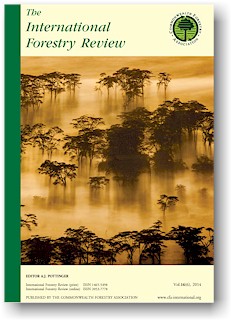
Vandergert, P. & J.P. Newell. 2003.
The International Forestry Review, 5 (3): 303–6.
Abstract: The vast forests of the Russian Far East and Siberia represent one of the last great forest wildernesses in the world, containing large expanses of boreal and northern temperate forest types. However, despite the seeming vastness of the forests in these regions, research has shown that they are becoming increasingly fragmented, particularly in the accessible southern areas, and much of this fragmentation is as a result of industrial forestry. While officially recorded timber production has declined over the past decade, this masks the unregulated and unrecorded production that has characterized much of the industry during this period. During the 1990s, the shift from domestic processing and consumption to the export of raw logs, the proliferation of operations as a result of privatization and liberalization, and the lack of regulatory capacity facilitated the increased criminalization of logging operations and cross-border trade.
Keywords: SiberiaRussian Far Eastindustrial forestrytimber
Newell, J.P. & E. Wilson. 1996.
Ecologist, 26 (2): 68-72.
Abstract: The Russian Far East has long been regarded by Moscow as a natural resource base. Under the Soviet regime, huge industrial complexes were set up to exploit the region’s abundant reserves of timber, coal, diamonds, gold, oil and gas. With the collapse of the Soviet Union, the area is now being opened up to to foreign investment. Powerful national and multinational interests are seeking to turn the region into a “natural resource colony” for the Pacific Rim economies.
Keywords: Russian Far Easttimberresource colonyenvironmental destruction



































